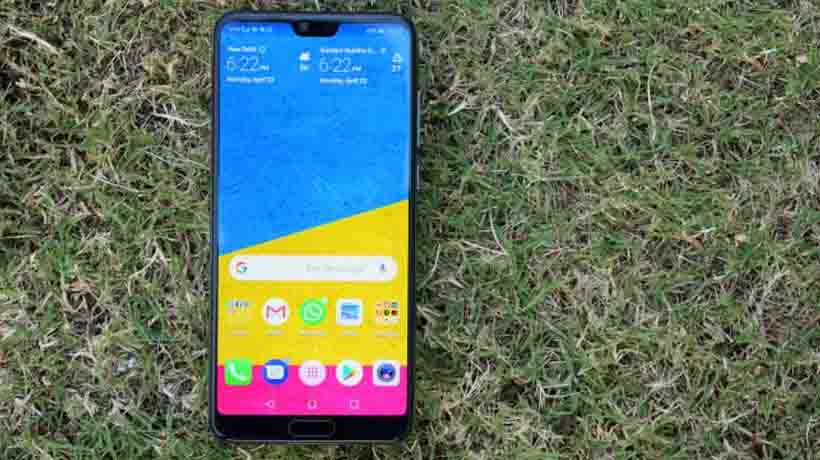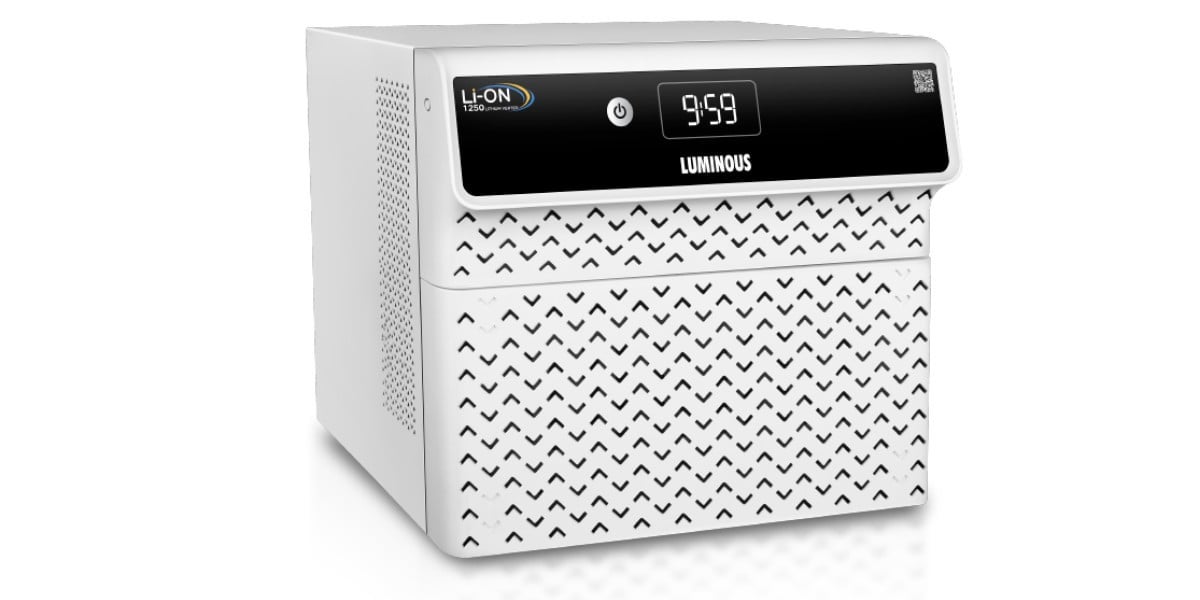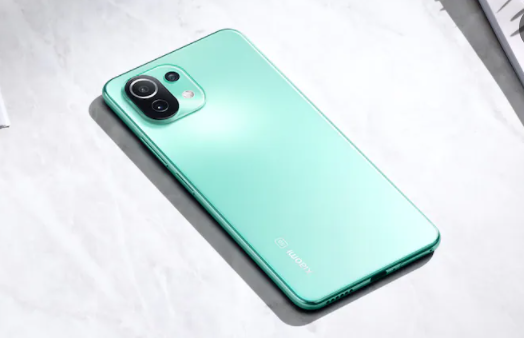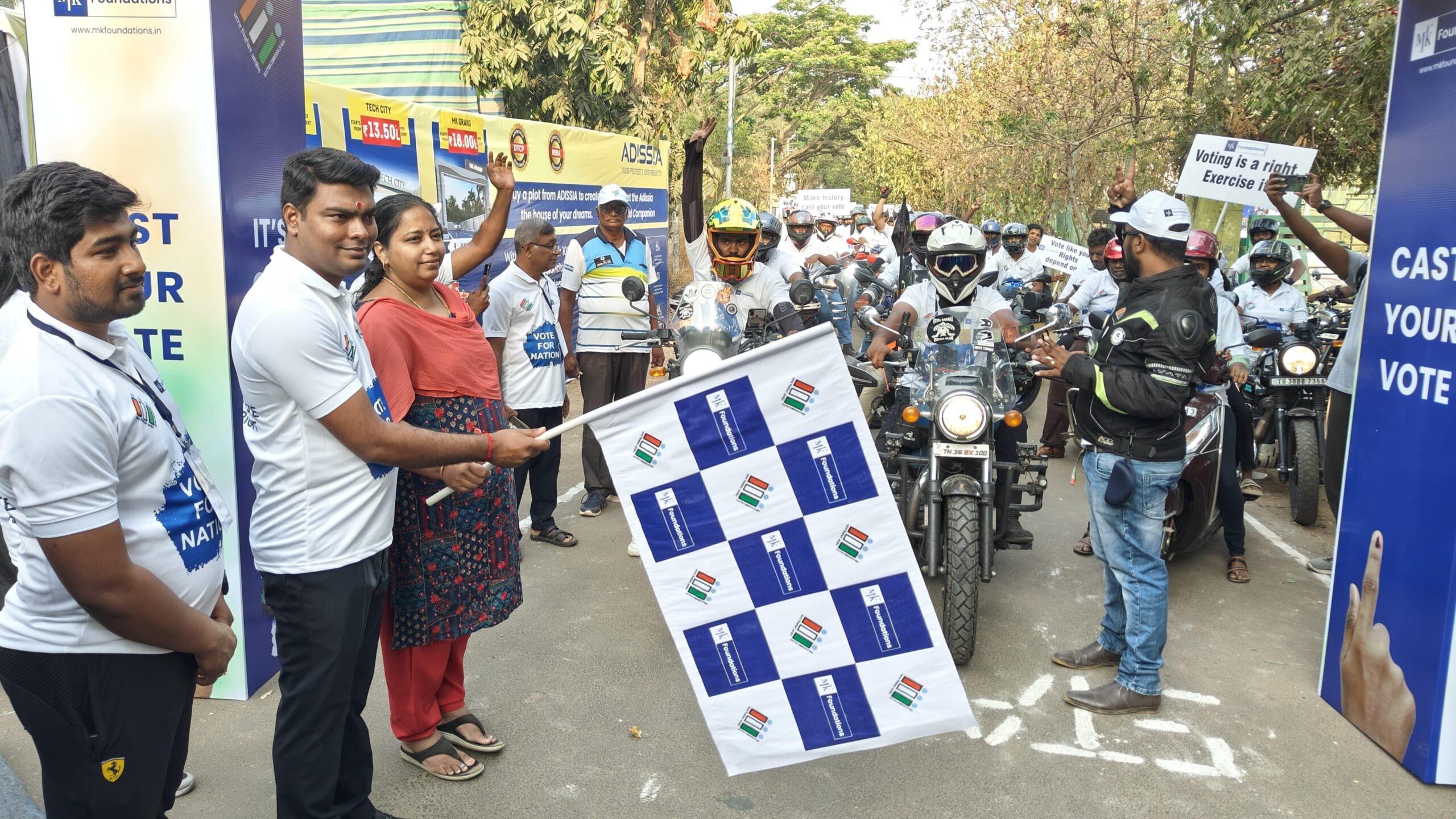Trending Now
- IPL 2024 begins with a bang. First contest between CSK and RCB.
- Election commission allots mike symbol to Naam Thamizhar Katchi
- AIADMK promises to urge for AIIMS in Coimbatore, in its election manifesto.
- Ponmudi becomes higher education minister.
Technology
Huawei P20 Pro review: A triple threat to Galaxys, iPhones and Pixels of the world
![]() April 25, 2018
April 25, 2018
Huawei was crazy enough to do dual cameras when no one else was doing dual cameras. Everyone’s doing dual cameras now. So someone at Huawei thought, “hey lets kick things up a notch.” Literally and figuratively. Hence was born the P20 Pro. The P20 Pro has a notch, of course, but that doesn’t sound crazy anymore now, does it? So what’s crazy about the P20 Pro, you ask? Well, the P20 Pro is the first smartphone in the world to come with not one, not two, but three rear cameras. THREE REAR CAMERAS.
There’s a saying, two’s company, three’s a crowd. In the case of the P20 Pro however, it seems, the more the merrier. That’s not necessarily a bad thing. You’ll have to give it to Huawei for thinking out-of-the-box. The concept of three rear cameras may sound ridiculous but there’s a method to Huawei’s madness. There’s only so much that one rear camera can do (barring the exception of the Google Pixel 2), also there’s only so much that dual rear cameras can do (barring the exception of the Samsung Galaxy S9+), so hey, why not fit in one more camera, just in case.
And it’s not just about fitting in more sensors, each of these sensors on-board the P20 Pro boast of crazy megapixel counts as well. There’s a 40-megapixel RGB sensor, and a 20-megapixel monochrome sensor, and an 8-megapixel telephoto lens. Not to mention, the P20 Pro, also has a whopping 24-megapixel camera on the front. That’s a lot of sensors, and a lot of megapixels. Question is, are they any good? Because at Rs 64,999, the P20 Pro, isn’t a cheap phone. It’s right up there with the Galaxys and the iPhones and the Pixels of the world. Not only will it have to be a fantastic camera phone, it will also have to get all the other things — that make a high-end flagship phone tick in this day and age — right. Good thing is, the P20 Pro, lives up to the hype. Mostly.
Design and build quality
If there’s one new-age phone that has made me fall head over heels in love with, courtesy design, it has to be the HTC U11. It’s that gorgeous. No other phone has been able to come even close. And then the Huawei P20 Pro happened. While the HTC U11 is still the best-looking phone ever in my opinion — that sadly no one’s talking about — the only phone that has been able to come close to it, with respect to looks and feel, is the P20 Pro. It’s as gorgeous, if not better. So much so that I’ve been having second thoughts about my loyalties with the HTC U11 ever since I’ve started using the P20 Pro.
If you thought only the HTC U11 can bend light at will, wait till you get your hands on the P20 Pro. Huawei’s new phone takes things to an all new level. The glass back of the P20 Pro, I dare say, is something else. If that wasn’t enough, Huawei’s choice of colours for the P20 Pro — pink gold, midnight blue, graphite black, and something on the lines of the Twilight series — is crazier still. In India, only the midnight blue colour will be available for buying, though. Which is, a little disappointing, since it’s the twilight version that’s actually creating all the buzz online.
The P20 Pro is carved out of glass and metal, although Huawei isn’t explicitly naming the version of the glass, nor the kind of metal that it’s using in the P20 Pro’s construction. All we know is that it’s using toughened curved 3D glass panels. Guess we’ll never know why the P20 Pro is as psychedelic as it is. The devil is in the details, but, not when the devil’s such a looker. It’s not the most scratch resistant though, since my review unit already has a few scars, and I happen to always use the bundled case, taking it off only on occasions. Not to mention, it’s a fingerprint and smudge magnet, and also super reflective. For what it’s worth, you can drop the P20 Pro in a sink full of water, and it should come out unscathed.
The P20 Pro is not just a looker, it feels equally well built and premium, when in the hands. It’s got very manageable proportions (180g, 7.8mm) and the whole thing feels solid and re-assuring to hold. The power button and the volume rocker on the right have excellent tactile feedback. A dual-SIM slot, meanwhile, lies on the left. The P20 Pro, just so you know, does not support expandable storage.
The front is a slightly different story though. The P20 Pro doesn’t look as good from the front, and no, the notch up-top has nothing to do with it. It’s just that the P20 Pro looks very generic from the front, which is kind of a bummer because its back is oh so futuristic. Makes you think the front and back were designed by two different set of designers. I understand the reason why the P20 Pro has a notch is so Huawei can offer more real estate, and it does offer lots and lots of it (over 90 per cent, to be precise) but the P20 Pro lacks symmetry. The iPhone X, that basically made everyone go bonkers about the notch, holds perfect symmetry. In the case of the P20 Pro, the top bezel — minus the notch — is bigger than the bezels on the side, and then there’s the whole bottom bezel that’s chunkier still. A welcome relief is that Huawei lets you hide that notch, via software, so you can kind of make the upper and lower bezels proportional, bringing some sanity to the whole thing
The bottom bezel, on-board houses a physical always-on fingerprint scanner that’s super fast and super accurate, and the dedicated area that houses it can also be turned into a convenient spot for a handful of gestures that may seem weird to start with but once you get used to them, it’s amazing how much you can do with them.
Camera
Colour bending glass is of course the primary reason why the P20 Pro looks so straight out of the future. The Leica-branded triple camera setup is the second. Not only does this setup take up a significant portion of the back, Huawei has added text along to firmly cement the P20 Pro’s roots: the P20 Pro is first and foremost a camera phone, everything else comes later. So let’s talk about them now. In depth.
The P20 Pro comes with a triple rear camera setup consisting of one 40MP RGB sensor (f/1.8) plus one 20MP Monochrome sensor (f/1.6) plus one 8MP Telephoto sensor (f/2.4). While you’re free to shoot 40MP photos, the P20 Pro by default, shoots 10MP shots by combining the data from four adjacent pixels into one through a feature that Huawei is calling Light Fusion. We’ve seen such a feature before in the Nokia Lumia 1020 but back in the day, companies weren’t quoting DxOMark scores to highlight their camera prowess. If you fancy some numbers though, the P20 Pro with a score of 114 (for still photos) is the best camera phone in the world right now, as per folks at DxOMark.
But coming back to that triple camera system, the P20 Pro does the usual Huawei mojo, unless specifically asked to shoot 40MP photos. The system can intelligently combine the data from both the RGB and the Monochrome sensors to produce brighter photos, with more detail, and richer colours, according to Huawei. The RGB and the Monochrome sensors don’t have OIS in the literal sense but come with something called as AIS or AI-enabled stabilisation. The third camera — an 8-megapixel tele-photo — meanwhile ships with OIS and allows for 3X optical zoom. The triple cam setup is also capable of producing 5X hybrid zoom.
Clearly, there’s a lot of tech inside the P20 Pro cameras. So much so that it’s safe to say that the P20 Pro is an engineering marvel, even more so that the Samsung Galaxy S9+ with its variable aperture gimmickry. But let me start with the best bits about it. The P20 Pro is the fastest camera phone in the market right now. If that wasn’t enough, Huawei has also put in a feature that it is calling Ultra Snapshot that lets you take a super quick shot by just double clicking the volume down button, even from a powered down screen. The quality of such a photo, of course, wouldn’t be the greatest — also locking focus would be a definite issue — but it’s really nice to have such an option to take super quick reference photos. The P20 Pro is also the smartest camera phone in the market right now, and also the one that crams in the maximum features/modes around, provided you’re into that sort of thing.
Huawei and AI are inseparable, it seems, in the current scenario and the P20 Pro makes a classic case of how things will be, for smartphones, in the near future. AI is the future, and Huawei would want to say, it got their first. For good reason. The P20 Pro is jam-packed with AI, but, its cameras are where you can actually see it in action. It all starts with the nomenclature. The P20 Pro comes with something called Master AI which is essentially a dedicated toggle for enabling the phone’s AI genius post which it will apparently be able to identify more than 500 scenarios in 19 categories and then automatically select modes and settings to deliver supposedly better results. The P20 Pro, as a result, can make your greenery look greener, blue sky look bluer, text look sharper, a dog look cuter (pun intended), so on and so forth. The P20 Pro knows when you’re taking a portrait shot and switches to portrait mode. The P20 Pro knows when you’re dealing with low light and switches to night mode. So on and so forth. All in real time. Because, everything is happening inside the phone itself — courtesy Huawei’s dedicated Neural Processing Unit — and not over some cloud, the whole process is lightening fast. And secure at the same time.
So, it’s smart alright. But is it any good? Well mostly. The bumped up shots you get after letting your AI overlord do all its tinkering look exceptionally good. No matter the lighting conditions. Often over-processed, but good nonetheless. 80-85 per cent of people would end up admiring these photos, the rest, of course, would say these are far from reality or artificial. Bottom-line is, for most people, it wouldn’t matter. The P20 Pro AI can be best summed up as a live action filter so you don’t have to rely on third-party apps like Snapseed to make your photos look Instagram-worthy. The fact that it is also smart enough to apply relevant filters from time to time, is just an icing on the cake. But it’s not perfect. Time and again there will be instances when you’ll realize that it’s actually software, and no software is perfect. Especially in low light when every other photo you take with it, and that has a person in it, ends up being a soft and mushy portrait. What if I don’t want it to be a portrait in such cases? There’s nothing that I can do about it, unless I disable the feature altogether. While I like the option, it would have been nicer if Huawei had given it somewhere in the view-finder itself, so I won’t have to dive into the settings every time I want to disable it. Master AI is fun, but if you happen to like truer to life photos like me, you’re better off disabling it.
Because that’s where the P20 Pro really shines. Especially in low light. The phone comes with a dedicated night mode that lets you enjoy the perks of long-exposure photography in a pint-sized form factor. Well it’s not so much about a long-exposure shot as it is about the camera taking 4 simultaneous shots and then stitching them all together into one finer looking shot. But the effect is one that would shame the best in the business. I am talking about all the Galaxys and the iPhones and the Pixels of the world here. Low light photos — and also ultra low light photos — captured with the P20 Pro bask in detail, and colours that wouldn’t even be visible to the naked eye in such situations. And when there’s some light around, the P20 Pro, surprisingly manages to maintain the integrity of light and dark regions so convincingly, you’ll be hard pressed to know a smartphone camera actually took such a photo. There’s a lot of noise reduction and over-processing happening under the hood, so there will be instances when the sky will seem like an oil-painting or something, but overall, the P20 Pro really excels in low light. The P20 Pro, would in fact, be the best low light camera phone in the market right now. For most people. For people who prefer more natural-looking photos, the Pixel 2 still holds an upper hand.
Night mode, when used in good light, entails in even sharper photos. Photos with good dynamic range and lots and lots of detail. That’s not to say, the P20 Pro doesn’t take good photos in auto. It does, but then, every other phone in its price range can do that. The P20 Pro, I’d say, may be a little faster in comparison. Also the option of 3X optical zoom and 5X hybrid zoom — especially the 3X zoom — is a welcome addition.
Sadly, as good as the P20 Pro is at shooting photos, it fails miserably while shooting videos. Especially 4K videos. Videos shot using the P20 Pro come out soft, even blurry at times, and shaky in tricky and low light scenarios, which is a little disappointing since the P20 Pro has every ingredient in the book to be the complete package as far photography is concerned. But it isn’t. The same is true about Huawei’s version of super-slow motion that lets you shoot some mind-boggling 960fps videos at 720p much the like the Samsung Galaxy S9+. Somehow last year’s Sony Xperia XZ Premium end up being better than both these phones in terms of both usage as well as output.
The 24-megapixel front camera on-board the P20 Pro may seem an overkill, but, we live in a world where the Oppos and Vivos have made it the new normal. If you’re into that sort of think, I am happy to report, that the P20 Pro can take pretty well-detailed selfies and also there’s beautification — lots of it, in fact — if you’re looking to hide them/soften them out as well. The P20 Pro can take portrait selfies, and also comes with a portrait lighting feature like the one inside the iPhone X. Both of them work well enough, but, there’s still some time before anyone comes close to the Google Pixel 2 in this regard.
Battery
The P20 Pro has so many camera tricks, and if you’re someone who likes to play around with gadgets and explore them to the core, you’d want this thing to have a long-lasting battery as well. Because, all those camera tricks, suck in a lot of juice. The 4,000mAh battery inside the P20 Pro holds, and it holds well. It is, in fact, the third biggest highlight of the P20 Pro. Most users with generalized usage patterns will be able to get at least one and a half days of battery life out of the P20 Pro. The phone supports fast charging and ships with a certified fast charger in the box. Wireless charging isn’t supported.
How about the rest of the stuff?
The rest of the stuff is pretty good too. The reason why I am putting all this in the end is because, the P20 Pro had potential, and it does well in the design, the camera and the battery department but rest of it, well, it could have been better.
— The 6.1-inch Full-HD+ OLED screen of the P20 Pro looks really good, with good viewing angles and punchy colours. But it doesn’t get very bright and that can be a problem when you’re out in warm sunny environment.
— Huawei’s in-house Kirin 970 processor is good too, but the P20 Pro is not as fast as the Samsung Galaxy S9+ or the iPhone X or even the Google Pixel 2 that has comparable hardware. There’s enough RAM and storage on-board (6GB RAM/128GB non-expandable storage) but there’s only so much that last-year’s chip can do next to the current lot.
— Then there’s EMUI. Don’t mind me, it has come a long way, and has become even better now. But the Android 8.1 Oreo-based EMUI 8.1 inside the P20 Pro still feels overtly cluttered and confusing. Not to mention, it has tonnes of unwanted apps, many that you can’t uninstall. Even the camera app that Huawei ships with the P20 Pro is a cornucopia of features and settings that a layman would find hard to grasp anytime soon.
— The P20 Pro comes with dual stereo speakers that can get really loud, but, often there’s some distortion at peak volume. The audio also ends up sounding hollow at times, which means even thouh it gets loud, the end result isn’t all that pleasing in comparison to say the HTC U11.
Should you buy it?
The P20 Pro is a fantastic phone. Especially if you were to talk about design, camera and battery life. No one else comes close. But it’s the other areas — display, performance and software — where the P20 Pro sort of takes things easy. Now you can’t take things easy when you have phones like the Samsung Galaxy S9+, the iPhone X and the Google Pixel 2 up against you. The margin of error is bare minimum, even more so, when you’re a company like Huawei who’s looking to make a comeback in the Indian market after a year of silence.
Huawei’s other subsidiary, Honor, is well placed in India but that’s because it operates in a very different price segment. Huawei phones have always been expensive. The P9 with its dual cameras was an expensive phone back in the day. The P20 Pro is also an expensive phone. That’s not to say, that it’s lacking. It’s just that it could have been better. At Rs 64,999 the P20 Pro may have all the goodies — and the best low light camera ever — but chances are you’ll end up picking a Samsung Galaxy S9+ or an iPhone or a Pixel 2 over this one, because all these phones get everything right. The P20 Pro doesn’t. Hopefully, the next-generation — if that comes to India — is better.
























